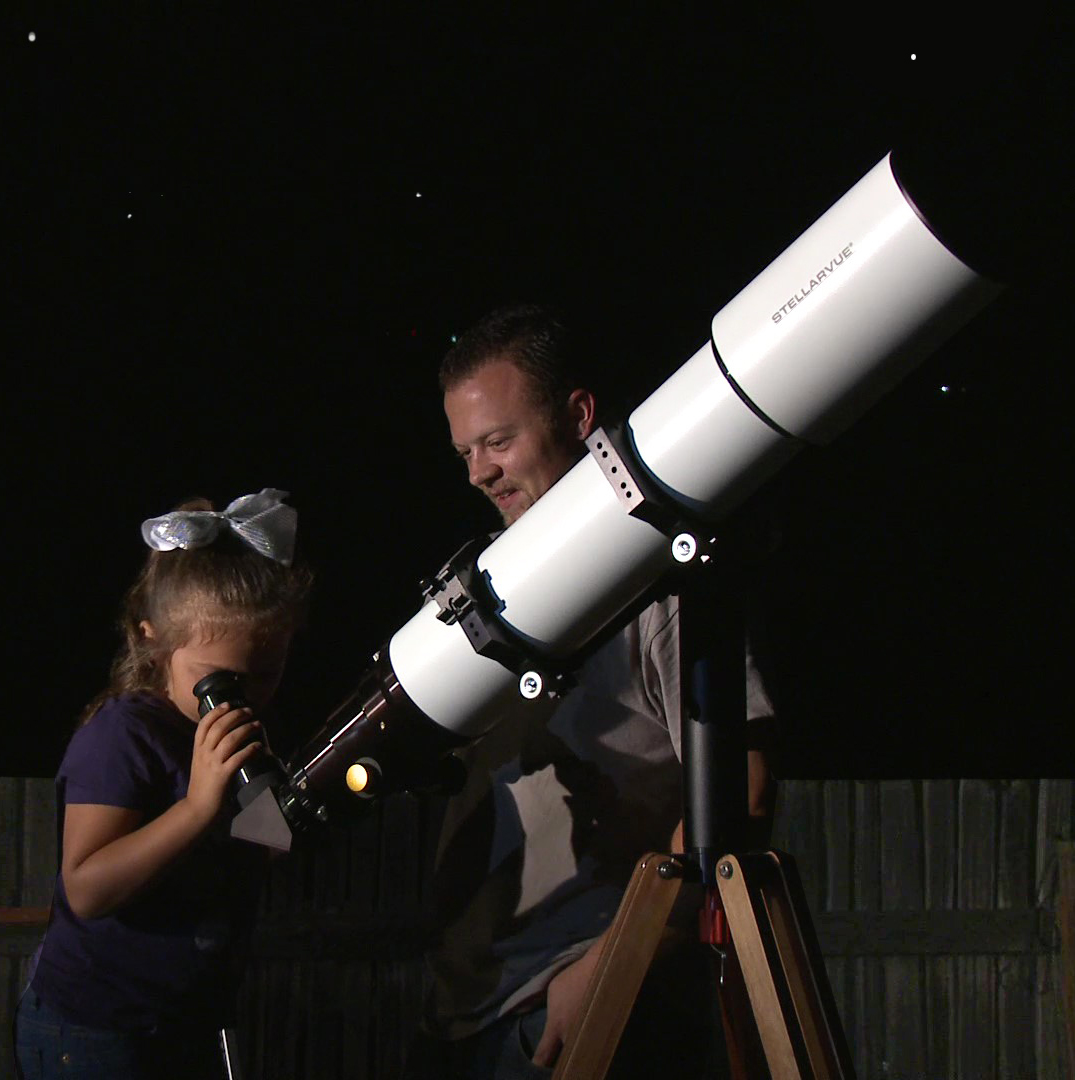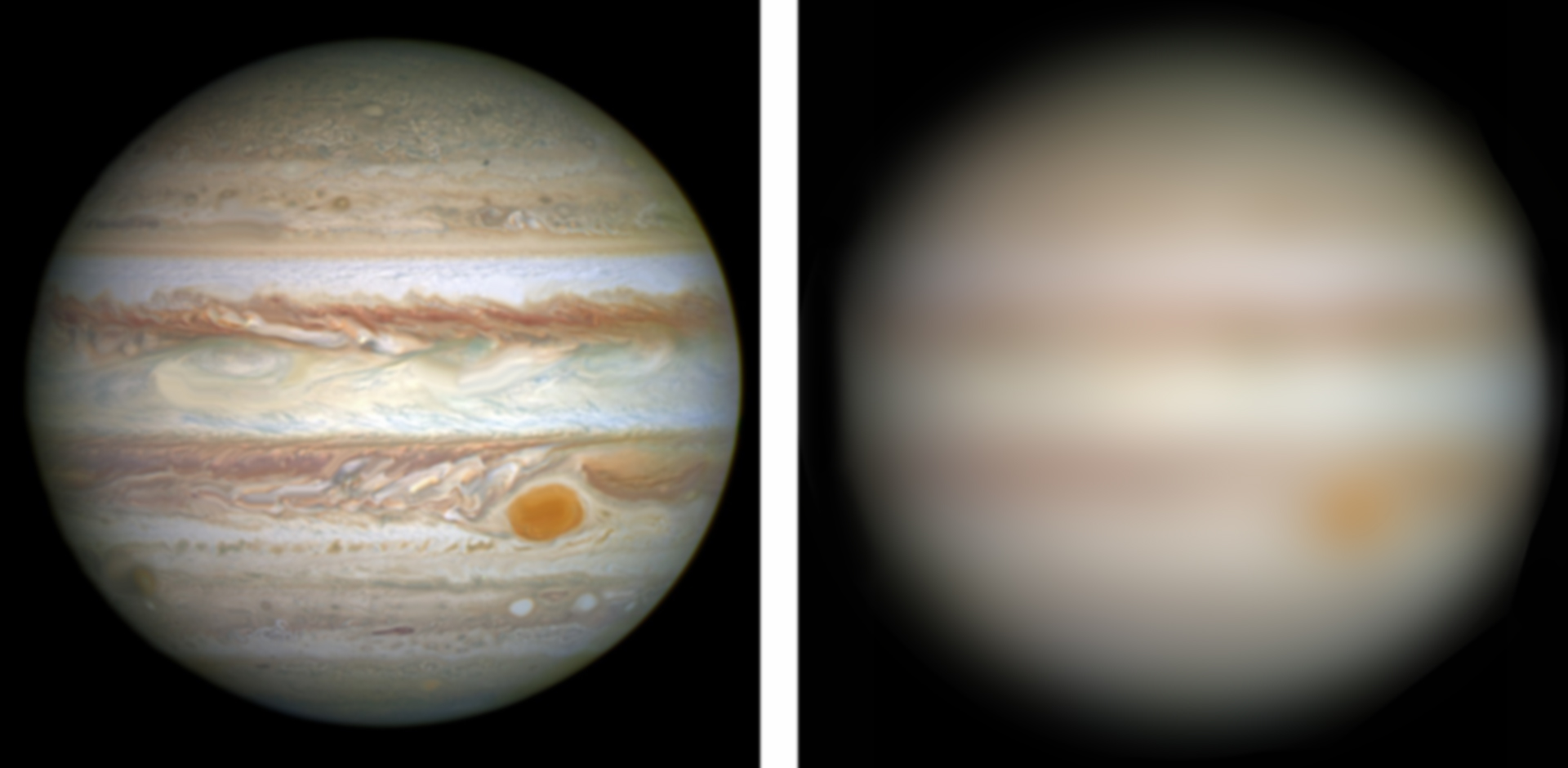Magnification

1. Gather light (make things appear brighter than they do with the naked eye)
2. Magnify the image (make things appear larger than they do with the naked eye)
Gathering light: Refractor telescopes gather light based on the size of the lens. This main lens is called the "objective". The larger the objective, the more light it gathers. Objects in space are extremely far away and very dim; the more light you gather, the more you will see. Our 80 mm telescope gathers 130 times the amount of light your naked eye does. Our largest telescope is the SVX180T and it gathers 661 times the amount of light our naked eye does!
Magnifying the image: Binoculars often operate at about 7-12x meaning objects appear 7-12 times larger than they do to the naked eye. Larger telescopes can magnify several hundred times more than the naked eye, making small objects like planets appear large enough that we can see details on the surface. These magnification powers also allow us to split close double stars and make out small regions of faint nebulosity (gaseous clouds in space).
While a telescope gathers light based on the size of the objective, it magnifies based on the eyepiece used. Different eyepieces provide different magnification powers, allowing the user to select from a variety of powers. Different objects require different magnification powers. A very large, extended object like the Andromeda Galaxy requires a very low power, which affords the widest possible view. Star clusters are best seen at medium magnifications. Planets and double stars are best viewed at higher magnification powers.
The better the optics, the clearer things will appear. Two problems that can lead to a poor night of viewing are:
 1. Poorly made, mass-produced optics. They can magnify to the same power as a high-end apo refractor, but make the object appear blurry so that small details are invisible (the object is large but you cannot see it clearly). This effect is called "empty magnification". Premium optics can be used athigher magnifications on steady nights, up to 100X per inch of aperture.
1. Poorly made, mass-produced optics. They can magnify to the same power as a high-end apo refractor, but make the object appear blurry so that small details are invisible (the object is large but you cannot see it clearly). This effect is called "empty magnification". Premium optics can be used athigher magnifications on steady nights, up to 100X per inch of aperture.
2. Air turbulence in the upper atmosphere. Even if the air is still all around you, it may be turbulent at higher altitudes. This will blur details, limiting the amount of magnification power you can use. Twinkling stars is an indication of air turbulence. On such nights it is best to lower the magnification power to get the sharpest view. Turbulent nights are best for viewing objects like star clusters and nebulae. Steady nights allow one to boost power and get a closer look at lunar craters, close double stars, and fine details on the nearer planets. The images to the left gives some idea of the differences between views on a steady night and a turbulent one. Jupiter will literally boil in bad air turbulence.
